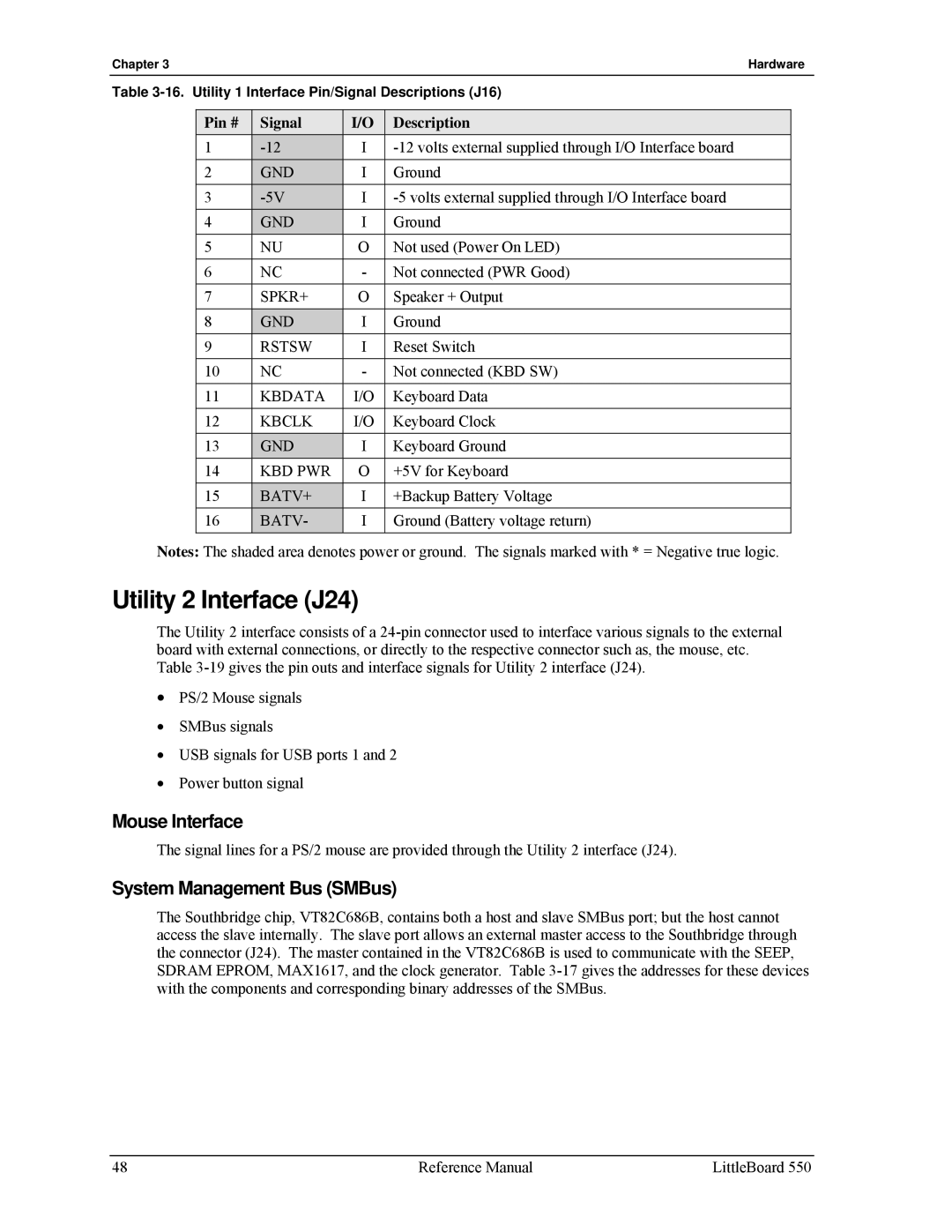Chapter 3 | Hardware |
Table
Pin # | Signal | I/O | Description |
1 | I | ||
2 | GND | I | Ground |
3 | I | ||
4 | GND | I | Ground |
5 | NU | O | Not used (Power On LED) |
|
|
|
|
6 | NC | - | Not connected (PWR Good) |
|
|
|
|
7 | SPKR+ | O | Speaker + Output |
8 | GND | I | Ground |
9 | RSTSW | I | Reset Switch |
|
|
|
|
10 | NC | - | Not connected (KBD SW) |
11 | KBDATA | I/O | Keyboard Data |
|
|
|
|
12 | KBCLK | I/O | Keyboard Clock |
|
|
|
|
13 | GND | I | Keyboard Ground |
14 | KBD PWR | O | +5V for Keyboard |
|
|
|
|
15 | BATV+ | I | +Backup Battery Voltage |
16 | BATV- | I | Ground (Battery voltage return) |
Notes: The shaded area denotes power or ground. The signals marked with * = Negative true logic.
Utility 2 Interface (J24)
The Utility 2 interface consists of a
•PS/2 Mouse signals
•SMBus signals
•USB signals for USB ports 1 and 2
•Power button signal
Mouse Interface
The signal lines for a PS/2 mouse are provided through the Utility 2 interface (J24).
System Management Bus (SMBus)
The Southbridge chip, VT82C686B, contains both a host and slave SMBus port; but the host cannot access the slave internally. The slave port allows an external master access to the Southbridge through the connector (J24). The master contained in the VT82C686B is used to communicate with the SEEP, SDRAM EPROM, MAX1617, and the clock generator. Table
48 | Reference Manual | LittleBoard 550 |
